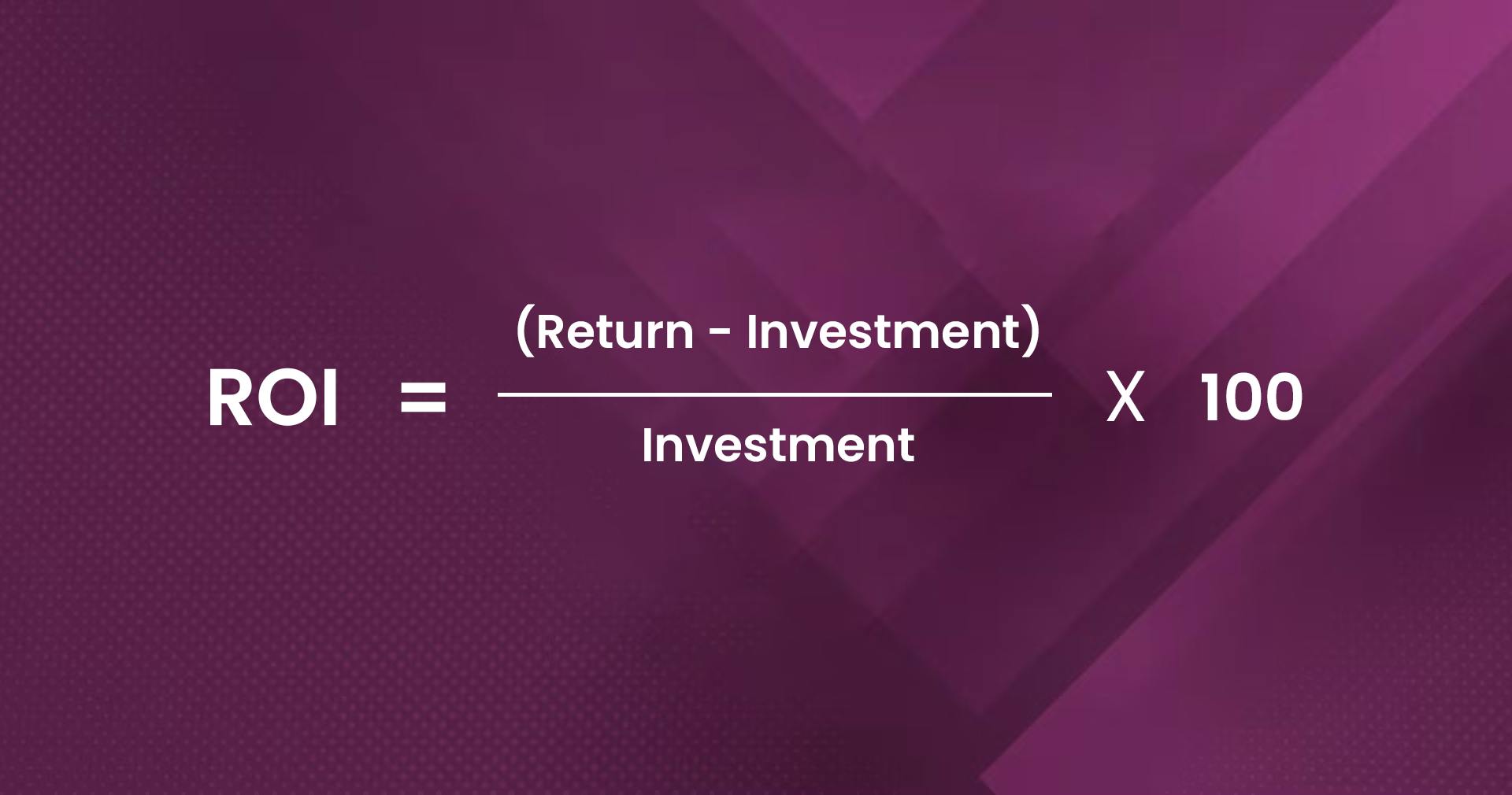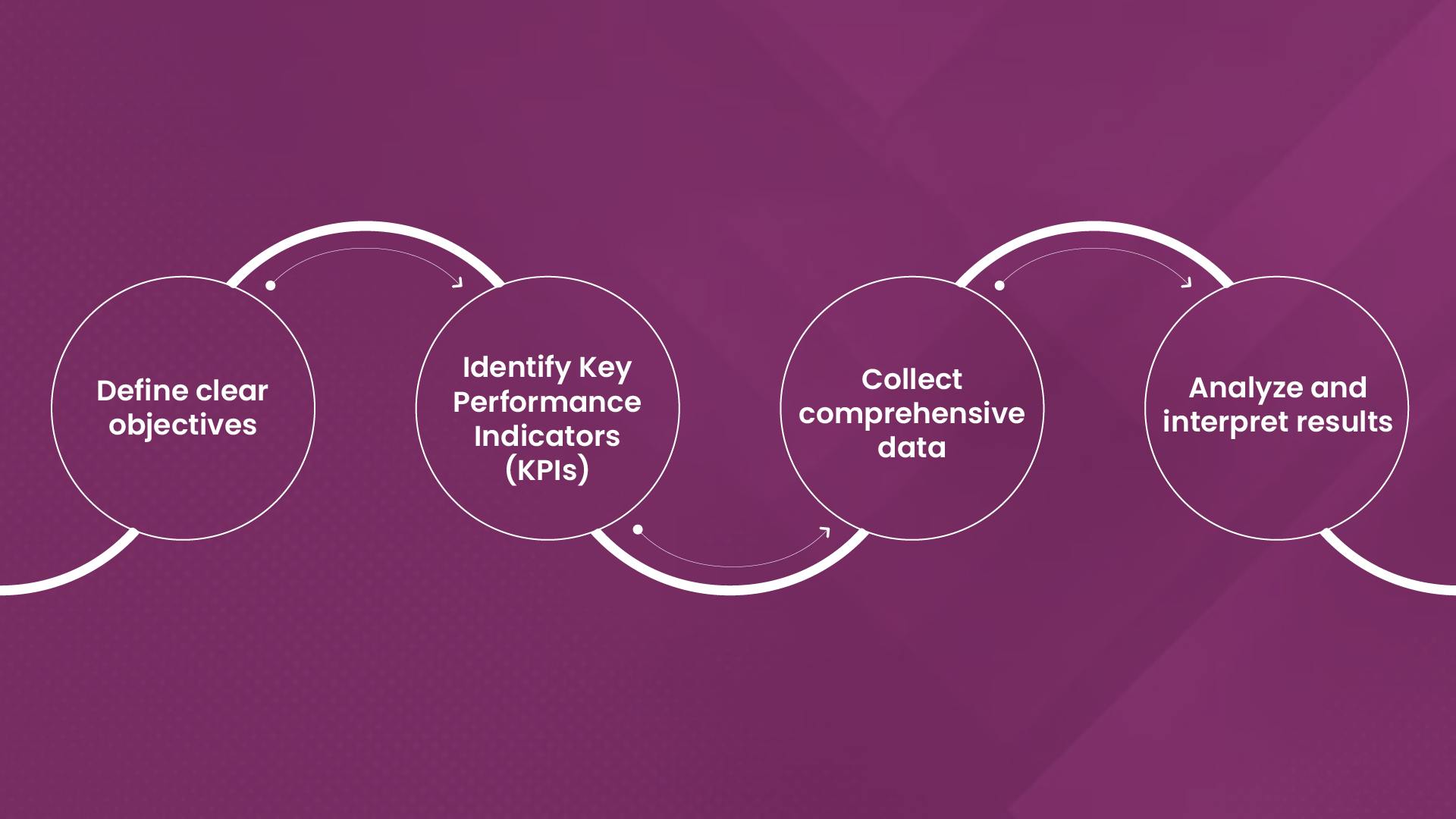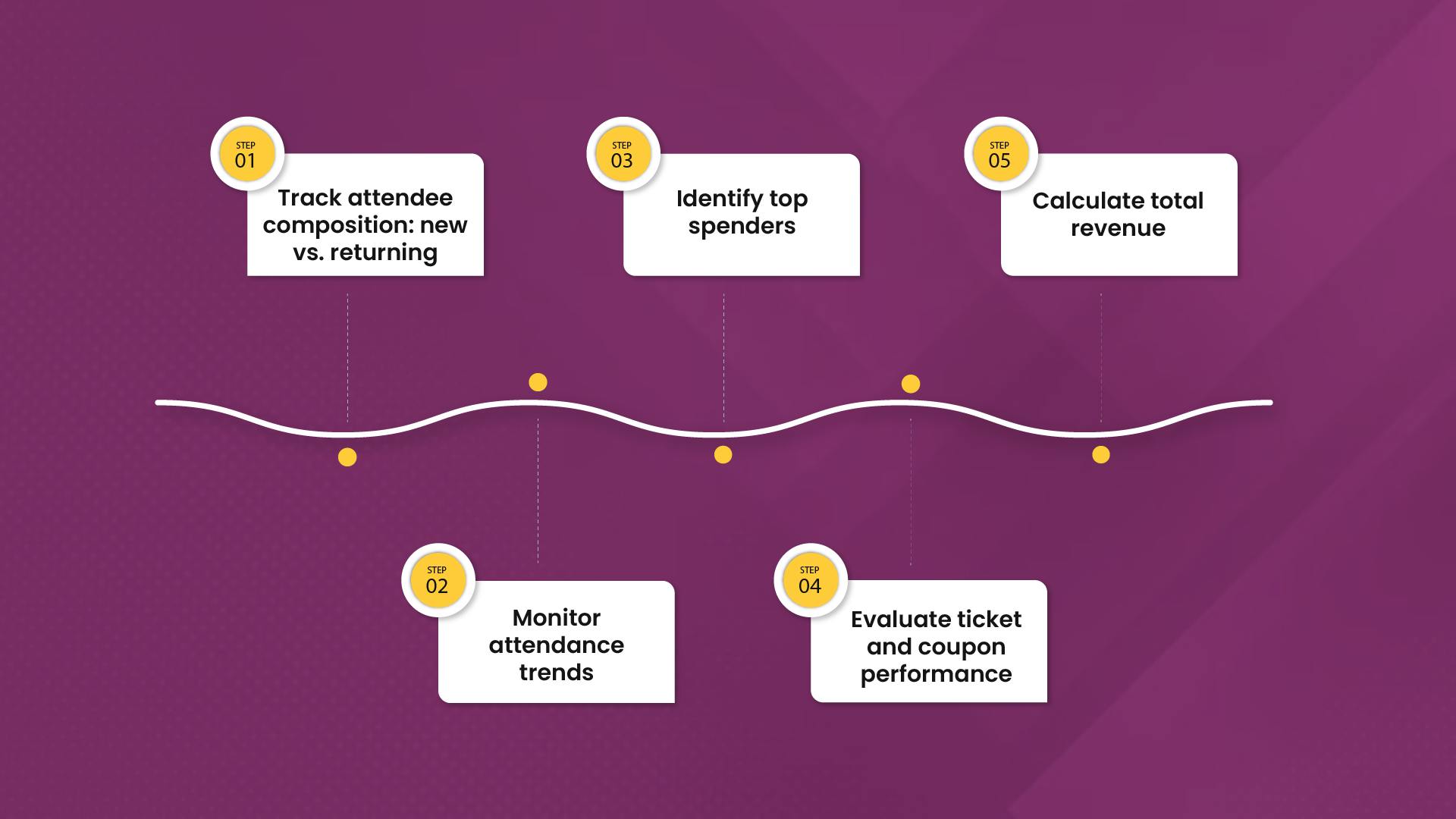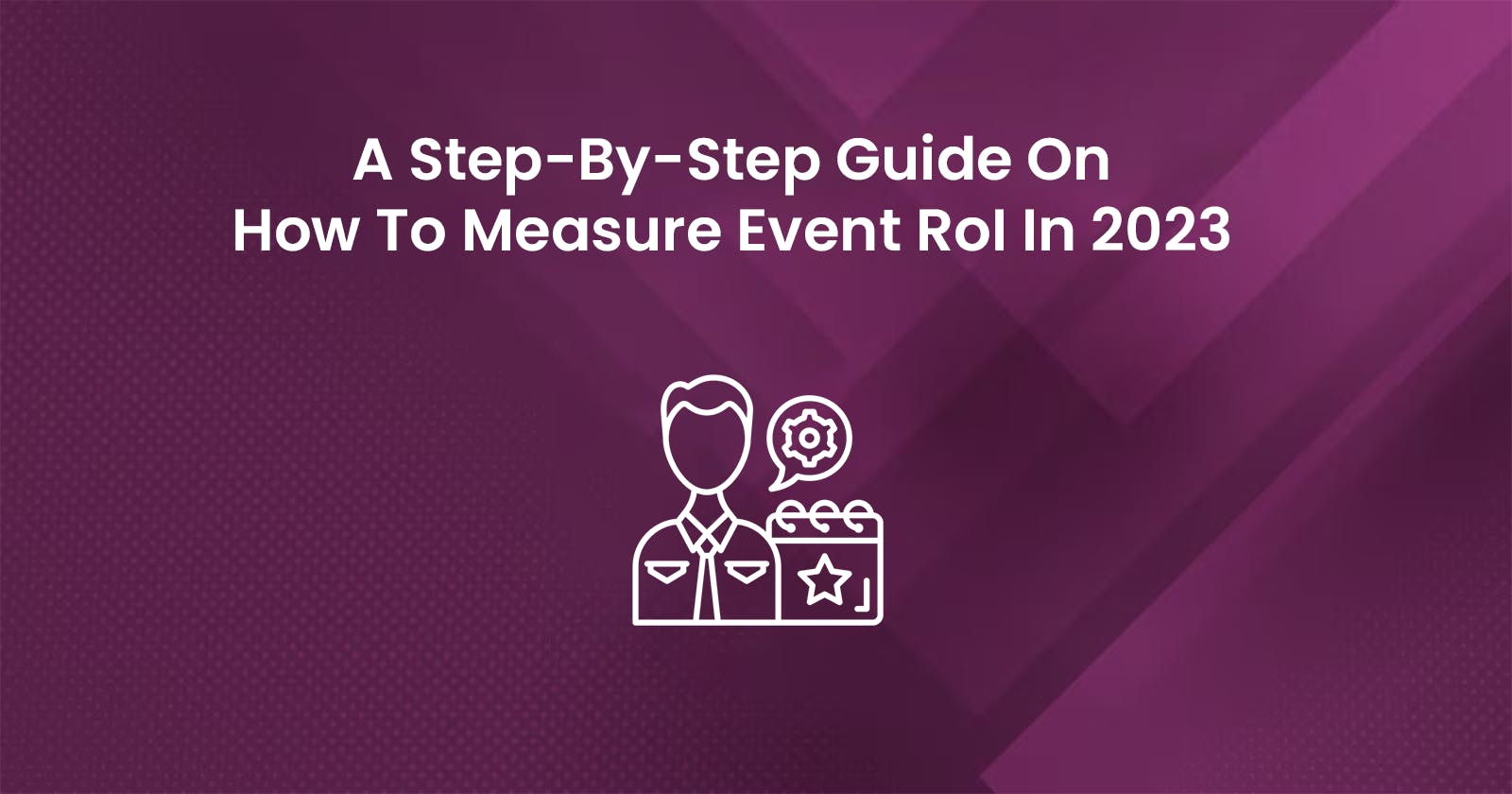Event planning and execution require significant investments in terms of time, money, and resources. As an event organizer or marketer, it's crucial to evaluate the success and effectiveness of these endeavors.
That's where event ROI (Return on Investment) comes into play. Event ROI is a metric that helps assess an event's financial and non-financial outcomes, providing valuable insights into its overall performance and impact.
Understanding event ROI is essential for making informed decisions, improving future events, and maximizing the return on your investment. However, determining what constitutes a good ROI for an event can be challenging, as it varies based on factors such as industry, event type, and objectives.
In this blog, we will delve into the concept of event ROI and explore various models for calculating it. We will also outline a step-by-step process to measure and analyze event ROI effectively.
With these guidelines, you will gain a comprehensive understanding of the financial success and overall effectiveness of your events, enabling you to make data-driven decisions and continually improve your event strategies.
With that in mind, let’s get started!
What is event RoI?
Event ROI, or Return on Investment, is a crucial metric that measures the financial and non-financial outcomes of an event relative to the resources invested. It provides a quantitative assessment of the value generated from hosting an event and offers insights into its effectiveness and overall success.
Measuring event ROI is essential for organizations and event planners for several compelling reasons.

1. Strategic decision-making
By quantifying the returns generated from events, organizations can make informed decisions about resource allocation, budgeting, and future event strategies. Event ROI analysis helps identify which events deliver the highest value and contribute most effectively to organizational goals.
2. Justifying investments
Events often require substantial investments in time, money, and effort. Measuring ROI allows organizations to demonstrate the tangible value and impact of their events, thereby justifying the resources allocated to them.
This is particularly important when seeking sponsorships or securing future event budgets.
3. Continuous improvement
Event ROI analysis provides actionable insights to enhance future events. By understanding what worked well and what didn't, organizations can optimize their event planning, marketing, and execution strategies. It helps identify areas for improvement, refine target audiences, and enhance attendee engagement and satisfaction.
4. Stakeholder engagement
Event ROI analysis allows organizations to communicate the value and success of their events to stakeholders, including sponsors, partners, and attendees. Demonstrating a positive ROI enhances credibility and fosters more robust relationships with key stakeholders, leading to increased support, partnerships, and attendee loyalty.
5. Benchmarking and comparison
Measuring event ROI enables organizations to compare the performance of different events, assess industry benchmarks, and benchmark against their own historical data. This helps identify trends, patterns, and best practices to enhance future event outcomes.
Implementing effective ROI measurement practices ensures that you and your organization can unlock the potential for continuous growth, success, and innovation in the events landscape.
What is a good RoI for an event?
Determining what constitutes a good ROI for an event requires a careful analysis of industry benchmarks, event objectives, and the specific context in which the event takes place.
While the ideal ROI may vary based on factors such as industry, event type, and organizational goals, some certain benchmarks and considerations can help guide your evaluation.
Here are some key aspects to consider when assessing the ROI of an event.
Financial targets
Industry standards
Event type and scale
Long-term impact
Event objectives
Let’s take a closer look at these.

1. Financial targets
Consider the financial goals set for the event. For example, if the objective is to generate revenue, a good ROI may be achieving revenue that is significantly higher than the event's expenses.
Alternatively, if the goal is to break even or generate leads, a good ROI may be measured by the number of qualified leads acquired compared to the investment made.
2. Industry standards
Look at industry-specific benchmarks to gauge the performance of your event. Research and analyze data from similar events to identify the average or expected ROI in your industry. This will provide a benchmark against which you can assess the success of your own event.
3. Event type and scale
Different types of events have varying expectations for ROI. For instance, a large-scale industry conference may have a different ROI expectation compared to a small networking event. Consider the scale, purpose, and audience of your event when evaluating ROI.
4. Long-term impact
Consider the potential long-term benefits and indirect outcomes of the event. For example, an event that successfully generates new business partnerships or strengthens relationships with key stakeholders may have a higher long-term ROI, even if the immediate financial return is not as high.
5. Event objectives
Align the ROI assessment with the specific objectives set for the event. If the primary goal is brand awareness, the ROI may be measured in terms of increased social media engagement, media coverage, or positive brand sentiment.
It's important to note that ROI is not solely a financial metric. Non-financial outcomes, such as increased brand exposure, customer satisfaction, or knowledge transfer, can also contribute to a good ROI.
In some cases, the intangible benefits may outweigh the immediate financial gains.
Ultimately, a good ROI for an event aligns with the predetermined goals, exceeds industry benchmarks where possible, and delivers a positive impact on both the short-term and long-term success of the organization.
2 models for calculating event RoI
There are several models available for calculating event ROI, each offering a unique perspective on measuring the financial success of an event.
In this section, we will explore two commonly used models: the simple Return/Investment model and the advanced Incremental Revenue model.
Additionally, we will discuss other approaches to calculating event ROI, focusing on the comparison of expenses vs. revenue and profit vs. investment.
Return/Investment Model
The Return/Investment model is a straightforward approach to calculating event ROI. It compares the return generated from an event to the initial investment made.
The formula used to calculate event ROI in this model is:

The Return represents the financial gain or value derived from the event, while the Investment includes all costs associated with planning, marketing, and executing the event. This model provides a simple and quick way to assess the financial effectiveness of an event.
The simplicity of this model makes it suitable for evaluating smaller-scale events or events with a single revenue stream, such as ticket sales.
However, it has limitations as it does not consider the incremental revenue or other non-financial benefits that may contribute to the overall success of the event.
Incremental Revenue Model
The Incremental Revenue model takes a more comprehensive approach by considering the incremental revenue generated directly as a result of the event.
This model accounts for the revenue that can be directly attributed to the event and would not have been generated otherwise.
The formula used to calculate event ROI in this model is:

Incremental Revenue refers to the additional revenue earned specifically as a result of the event, beyond what would have been earned without the event.
This model takes into account factors such as increased sales, new customer acquisitions, or enhanced customer retention resulting from the event.
The Incremental Revenue model provides a more accurate representation of the event's financial impact and captures the potential long-term benefits. It is especially useful for events with multiple revenue streams, such as conferences with sponsorships, exhibitor fees, and ticket sales.
Other approaches to calculating event RoI
In addition to the aforementioned models, there are other approaches to calculating event ROI, including comparing expenses vs. revenue and profit vs. investment.
Expenses vs. revenue: This approach involves comparing the total expenses incurred for the event against the total revenue generated. It provides insights into the cost-effectiveness of the event and helps identify areas where expenses can be optimized.
Profit vs. investment: This approach assesses the net profit gained from the event in relation to the initial investment. It takes into account all revenue earned and subtracts the expenses to calculate the overall profit. This model provides a comprehensive view of the financial success of the event.
Obviously, it is recommended you select the model that aligns best with your event objectives, type, and available data to ensure an accurate assessment of event ROI.
How to measure event RoI
Measuring event ROI requires a systematic approach and a thorough understanding of the steps involved. Let’s check out the steps involved in measuring event ROI effectively.

Step 1 – Define clear objectives
Defining the main objective of the event is the crucial first step in measuring ROI. It provides a clear focus for all measurement efforts and ensures that you are evaluating the event's success based on its intended purpose.
For example, objectives could include generating a specific amount of revenue, increasing brand awareness by a certain percentage, or acquiring a targeted number of leads.
Take the time to clearly articulate the objective, such as generating revenue, increasing brand awareness, or fostering customer engagement. The objective should be specific, measurable, achievable, relevant, and time-bound (SMART).
Defining objectives provides a benchmark against which the success of the event can be evaluated.
Step 2 – Identify Key Performance Indicators (KPIs)
Once the objectives are defined, identify the key performance indicators (KPIs) that will help monitor and measure progress towards those objectives. KPIs serve as quantifiable metrics that help you track progress and success.
For example, if the objective is to generate revenue, relevant KPIs may include total revenue, ticket sales, sponsorship revenue, average transaction value, or conversion rate.
If the objective is to increase brand awareness, KPIs may include social media reach, website traffic, or media impressions.
Select KPIs that are relevant, measurable, and provide meaningful insights into the success of the event.
Step 3 – Collect comprehensive data
To accurately measure event ROI, collect comprehensive data related to the identified KPIs. Determine the data points required to track each KPI and establish a data collection process.
Utilize event management software, registration systems, ticketing platforms, or surveys to gather data on attendee demographics, registration numbers, revenue figures, marketing efforts, and expenses.
Additionally, track social media engagement, website analytics, and post-event surveys to capture qualitative feedback.
Ensure data collection methods cover all relevant aspects of the event and provide a comprehensive view of its performance.
Step 4 – Analyze and interpret results
Once the event concludes and the data is collected, it's time to analyze and interpret the results.
Start by organizing and summarizing the data in a meaningful way. Compare the results against the objectives set in step one to assess the success of the event. Look for patterns, trends, and correlations in the data to identify areas of success and areas for improvement.
Identify what worked well and what areas may require improvement. Consider conducting deeper analysis, such as segmentation of data by attendee types or comparing results across different marketing channels. Benchmark your results against industry standards or previous events to gain further insights.
In addition to numerical analysis, gather qualitative feedback through surveys or post-event interviews to understand attendee satisfaction, brand perception, or other non-financial impacts.
Combine quantitative and qualitative data to gain a holistic understanding of the event's ROI.
Remember, measuring event ROI is an iterative process. Use the insights gained from analyzing the results to make informed decisions for future events.
Continually refine your measurement approach, update your KPIs, and adjust your strategies based on the insights gained.
How to measure the improvement of your event’s ROI
Measuring the improvement of your event's ROI requires a detailed analysis of various aspects. By delving deeper into specific metrics and data, you can gain valuable insights to enhance your event's performance and maximize its return on investment.
Let's explore each step in detail.

Step 1 – Track attendee composition: new vs. returning
Differentiating between new and returning attendees provides insights into your event's ability to attract and retain participants. Tracking the number and percentage of new attendees versus returning ones is crucial for several reasons.
Firstly, it helps gauge the effectiveness of your marketing and outreach efforts in reaching new audiences. Secondly, it indicates the level of loyalty and satisfaction among returning attendees.
This data, over time, will help you identify trends, patterns, and shifts in audience composition. It helps you tailor your marketing strategies, personalize engagement approaches, and invest in initiatives that attract new attendees while nurturing relationships with existing ones.
Step 2 – Monitor attendance trends
Monitoring attendance numbers is a fundamental aspect of measuring the improvement of your event's ROI.
Analyzing attendance data allows you to understand the impact of your event's marketing, outreach, and programming efforts.
By comparing attendance figures to previous events or industry benchmarks, you can assess the growth and success of your event over time. If attendance is consistently high, it indicates a positive return on investment.
However, if attendance fluctuates or shows a decline, it highlights areas that require attention, such as marketing strategies, event content, or timing.
Keeping a close eye on attendance empowers you to make data-driven decisions to optimize event planning and enhance ROI.
Step 3 – Identify top spenders
Identifying your top attendees based on their spending at the event is essential for understanding the financial impact of specific individuals.
Analyzing data related to purchases, sponsorships, or donations made by attendees allows you to segment your audience and identify high-value customers. These individuals contribute significantly to your event's financial success and often exhibit higher levels of engagement and loyalty.
Understanding their preferences, behaviors, and motivations, is crucial for you to tailor personalized offerings, enhance their experience, and nurture long-term relationships.
This data also helps you refine your marketing and sales strategies to attract more high-value attendees and optimize revenue generation.
Step 4 – Evaluate ticket and coupon performance
Evaluating the performance of your ticket sales and coupon campaigns is crucial for optimizing your event's ROI. Analyze data such as the number of tickets sold, revenue generated from different ticket types, coupon redemption rates, or the effectiveness of promotional campaigns.
This step provides insights into the effectiveness of pricing strategies, discount offers, or promotional activities in driving ticket sales and boosting revenue.
By understanding which ticket types or coupon campaigns perform well and contribute most to your ROI, you can make data-driven decisions to optimize pricing, discounts, or marketing efforts for future events.
This leads to increased revenue and improved ROI.
Step 5 – Calculate total revenue
Calculating the total revenue generated by your event provides a comprehensive understanding of its financial success. It involves aggregating data from various revenue streams, such as ticket sales, sponsorships, merchandise sales, or additional services provided during the event.
Accurate tracking and calculation of total revenue enable you to assess the effectiveness of your revenue generation strategies and measure the event's overall financial impact.
Comparing the total revenue to your investment and expenses helps you evaluate the profitability and return on investment. This information helps you make informed decisions regarding cost management, revenue optimization, and future event planning.
Understand and elevate your events with comprehensive event RoI tracking using KonfHub
Tracking and measuring event ROI is of paramount importance for organizations, as it allows them to evaluate the financial success and effectiveness of their events. By understanding the return on investment, organizations can make data-driven decisions, optimize strategies, and justify event expenditures.
KonfHub, an all-in-one event management platform, offers a range of features to facilitate the tracking and measurement of event ROI.
With its comprehensive suite of tools, including ticketing management, attendee engagement, data collection, and analytics capabilities, KonfHub empowers organizers to effectively monitor ticket sales, revenue, attendee data, and engagement metrics.
By leveraging these features, organizers can gain valuable insights to enhance event performance, maximize ROI, and drive future success.
Interested in upping your event game to the best it can be? Contact KonfHub today!

